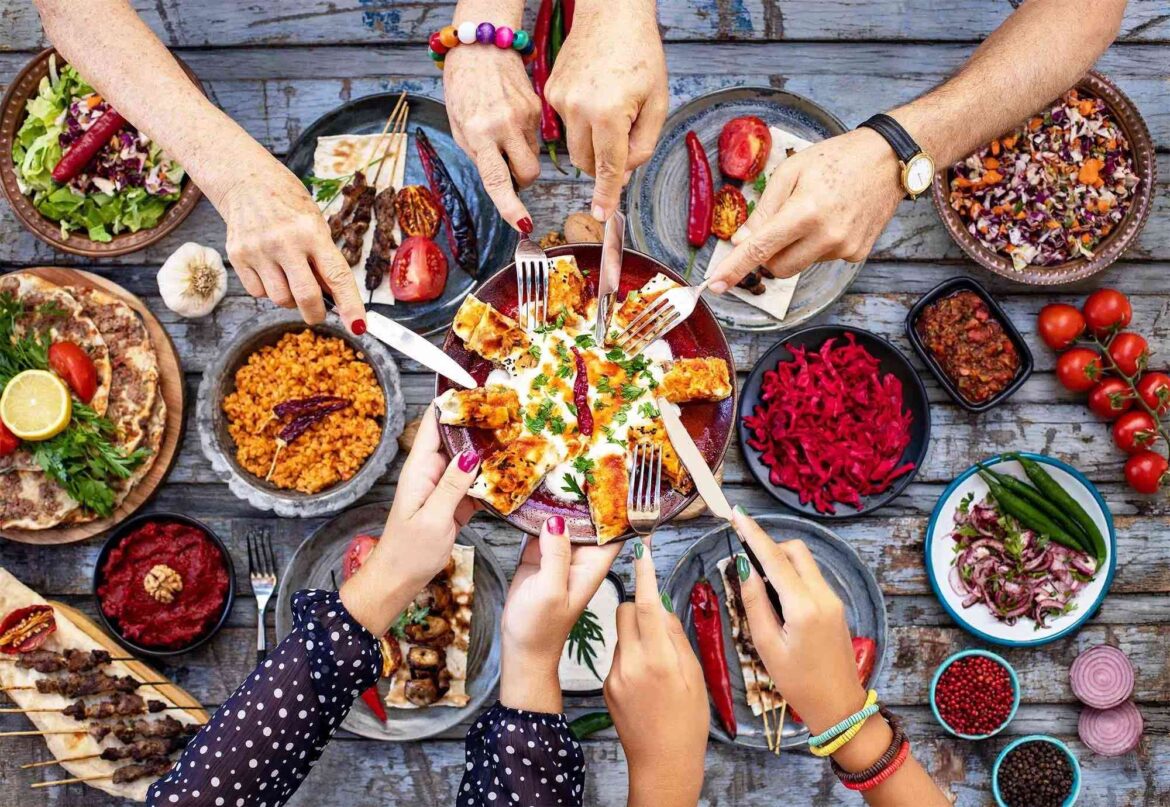Food is one of humanity’s oldest connections — a universal language that transcends borders, beliefs, and traditions. Every culture has its own way of expressing love, art, and creativity through food. Over time, however, this simple necessity has evolved into a complex mix of science, sustainability, and storytelling. The way we grow, cook, and consume food reveals not only who we are but how our world is changing.
The Evolution of Food Culture
Centuries ago, food was primarily about survival — meeting basic nutritional needs. But as societies advanced, food became something greater: a form of identity, hospitality, and innovation. What started as a means to sustain life evolved into a powerful expression of creativity and connection.
Today, food reflects globalization and cultural exchange. A bowl of ramen might be served next to tacos at a modern eatery, and desserts inspired by both French and Middle Eastern traditions are becoming common. Culinary boundaries are dissolving as chefs and home cooks alike experiment with global flavors.
Modern food culture is also deeply influenced by technology and social media. Recipes travel across continents within seconds, inspiring people to try new ingredients and techniques. Online spaces like urbansplatter.uk often highlight this intersection of creativity and culture, showcasing how food brings people together from every part of the world.
The Rise of Conscious Eating
One of the most significant changes in today’s food landscape is the rise of conscious eating. People are more aware than ever of what goes into their bodies — and how their food choices affect the planet.
Plant-based diets, once considered niche, have become mainstream. Restaurants and cafes are offering meatless alternatives that don’t compromise on flavor. Ingredients such as lentils, tofu, and mushrooms are celebrated not only for their taste but also for their nutritional and environmental benefits.
The farm-to-table movement has also gained traction, emphasizing fresh, locally sourced ingredients and reducing the distance food travels before reaching our plates. Consumers are paying attention to labels, preferring organic and sustainably produced foods.
Mindful eating goes beyond health — it’s about respecting food as a source of energy, tradition, and ethics. It encourages slowing down, savoring every bite, and appreciating where each ingredient comes from.
How Technology Is Transforming Food
Technology’s influence on food cannot be overstated. From precision agriculture to AI-powered recipe development, innovation is changing every step of the food chain. Farmers use drones and sensors to monitor crop health, while kitchen gadgets allow home cooks to prepare gourmet meals with minimal effort.
Apps now track calories, create meal plans, and even reduce waste by suggesting dishes based on leftovers. Social media has made food visual, inspiring people to plate creatively and share their culinary adventures online.
Moreover, scientific advancements have introduced alternatives to traditional food sources — lab-grown meat, plant-based seafood, and 3D-printed desserts are redefining what’s possible. These innovations not only expand culinary horizons but also address sustainability concerns in a growing global population.
For those interested in exploring evolving food trends and culinary creativity, reading about modern cooking innovations and dining experiences provides insight into how tradition and technology blend to shape the future of food.
The Emotional Connection to Food
Food has an emotional power unlike anything else. It’s comfort in a bowl, nostalgia on a plate, and celebration in every bite. A home-cooked meal can instantly transport you back to childhood. The aroma of freshly baked bread, for instance, often evokes warmth and familiarity.
Studies have shown that cooking can improve mental well-being. The process of preparing a meal engages the senses and offers a meditative escape from daily stress. Sharing food with others builds bonds and strengthens relationships, turning meals into moments of togetherness.
In many cultures, food represents love and respect. Offering a guest something to eat isn’t just politeness — it’s an act of care. That’s why certain dishes hold special meaning during holidays, weddings, or family gatherings. They aren’t just recipes; they’re memories passed from generation to generation.
Sustainability and the Future of Eating
As the global population grows, so does the challenge of feeding billions sustainably. Climate change, resource depletion, and food waste are pressing issues — but innovation is paving the way for positive change.
Sustainable food practices focus on minimizing waste, protecting biodiversity, and supporting eco-friendly agriculture. Composting, reducing plastic use, and buying local are small but impactful steps individuals can take. Restaurants and companies are joining the movement, redesigning menus and packaging to minimize environmental footprints.
One promising development is regenerative farming, which restores soil health and enhances ecosystems rather than depleting them. Chefs and food entrepreneurs are championing such practices, showing that great taste doesn’t have to come at nature’s expense.
Food sustainability is not just a trend — it’s a necessity. By making conscious decisions now, we ensure that future generations can also enjoy the abundance and diversity of global cuisines.
Globalization and Culinary Diversity
Today’s food landscape is more diverse than ever before. Globalization has allowed cuisines to cross borders, merge, and evolve. Fusion cooking — blending ingredients or techniques from different cultures — has become a symbol of modern creativity.
Think of Korean tacos, sushi burritos, or butter chicken pasta. These dishes are not only delicious but also tell stories of cultural blending. They represent openness, curiosity, and a willingness to experiment with flavors.
This exchange has made food more exciting and inclusive. However, it has also increased appreciation for authenticity. While new fusions thrive, there’s a renewed respect for traditional recipes and regional techniques. People want to experience both — innovation and heritage — on the same plate.
Food is no longer limited by geography. A passionate cook in Italy can draw inspiration from Thai spices or Peruvian sauces without ever leaving their kitchen. The global pantry is expanding, and creativity is limitless.
The Joy of Everyday Food
While fine dining has its charm, true satisfaction often comes from simple, everyday meals. The comfort of home-cooked food, shared laughter around the table, and the pride of mastering a recipe bring genuine happiness.
Cooking at home encourages experimentation. It’s where people rediscover forgotten flavors, try healthier alternatives, and learn the art of balance. In a world full of fast-paced routines, cooking serves as a grounding ritual — a way to slow down and reconnect with yourself.
Food is one of the few things that can instantly bring joy, spark conversation, and create memories. Whether it’s a perfectly brewed cup of tea or an elaborate feast, every meal has a story worth savoring.
Conclusion
The world of food is a beautiful mix of tradition, innovation, and emotion. It’s a reflection of who we are and how we live — connecting cultures, inspiring creativity, and sustaining life itself.
From the simplicity of daily cooking to the complexity of global cuisines, food continues to evolve, reminding us that every bite carries a story — one that nourishes both body and soul.




